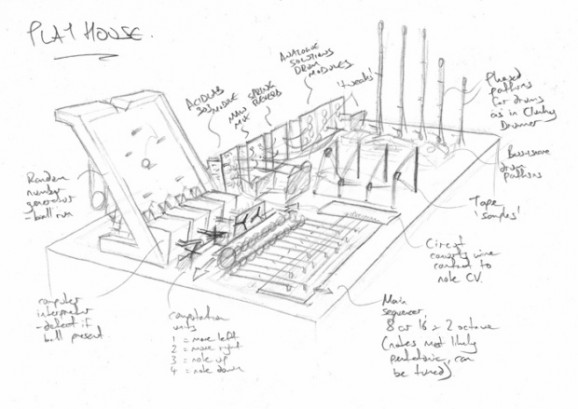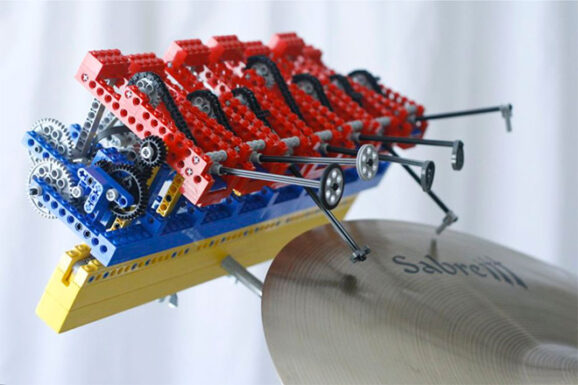This Lego Machine Plays Electronic Music
This article is more than 2 years old
What do you get when you put Lego blocks and electronic music together? Sheer awesomeness, of course. That was a rhetorical question. But creating such a perfect marriage is a lot harder than it may seem on the surface, just ask Alex Allmont, the brains behind this incredible display.
Allmont is a programmer and a PhD student in polyrhythmic music at Oxford Brookes University. He received his Masters in Contemporary Art there, which is when he started experimenting with integrating Lego into his music. One of his first projects was a “Pythagorean polyrhythmic piano” that converts tonal ratios into beats and is designed to encourage composers to experiment with rhythms and counter-rhythms. Such exploration of rhythm is at the heart of his PhD work, in which he strives to understand music both in terms of performance in perception. This means uniting the performer and the audience, as well as identifying and studying cognitive and performance-based aspects of playing music, including improvisation and the hypnotic states certain music can induce.
The above machine, Play House, was constructed for Oxford’s AudioGraft experimental music festival. He assembled the blocks to resemble a Roland TB303 synthesizer, an instrument commonly used in the early days of acid, techno, and house music (he’s particularly inspired by Plastikman and Basic Channel).
 I won’t pretend to understand how Allmont made this device, or “kinetic sculpture” as he calls it. He had to dial down the ambitiousness of his first design, which involved a melody-generating mechanical sequencer woven with chain-looped drumbeats. He also wanted to add cassette tapes, among other elements described in more detail, and shown, here. His Clunky Drummer prototype also had to be scaled back for the final Play House design, but the coolest aspects remain, including the little Rube Goldberg sequence that randomly generates one of the melodic sequences and can be seen in close up here.
I won’t pretend to understand how Allmont made this device, or “kinetic sculpture” as he calls it. He had to dial down the ambitiousness of his first design, which involved a melody-generating mechanical sequencer woven with chain-looped drumbeats. He also wanted to add cassette tapes, among other elements described in more detail, and shown, here. His Clunky Drummer prototype also had to be scaled back for the final Play House design, but the coolest aspects remain, including the little Rube Goldberg sequence that randomly generates one of the melodic sequences and can be seen in close up here.













